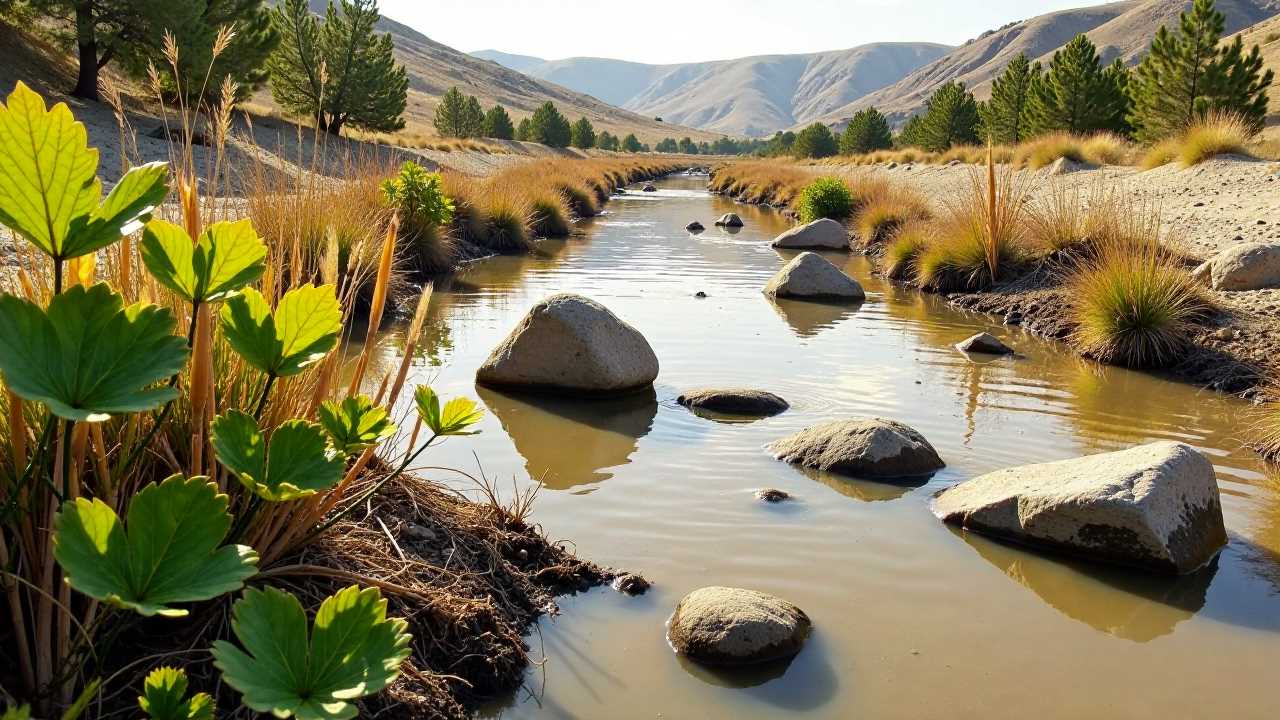
Understanding Xeriscaping
Xeriscaping is a landscaping approach designed to reduce or eliminate the need for supplemental water from irrigation. This method is particularly beneficial in regions prone to drought or where water conservation is a priority. By focusing on drought-resistant plants, we can create beautiful, sustainable landscapes that thrive in arid conditions. Xeriscaping not only conserves water but also promotes soil conservation and enhances the overall health of the ecosystem.
The Benefits of Drought-Resistant Plants
Incorporating drought-resistant plants into your garden is a fundamental aspect of xeriscaping. These plants are adapted to survive in low-water environments, making them ideal for sustainable landscaping. They require less maintenance and are more resilient to pests and diseases. Some popular drought-resistant plants include succulents, native grasses, and various flowering perennials. By choosing these plants, we can significantly reduce our water usage while still enjoying a vibrant and colorful garden.
Creating a Sustainable Landscape
Sustainable landscaping goes beyond just selecting the right plants. It involves a holistic approach to garden design that considers the local environment, soil health, and biodiversity. By utilizing native flora, we can create a landscape that is not only beautiful but also supports local wildlife and pollinators. Native plants are well-suited to the local climate and soil conditions, requiring less water and fewer resources to thrive.
Incorporating eco-friendly design principles into our landscaping can further enhance sustainability. This includes using organic fertilizers, implementing composting practices, and reducing chemical pesticide use. By prioritizing sustainability, we contribute to a healthier planet and create a more resilient garden.
Water-Efficient Gardening Techniques
Water-efficient gardening is a cornerstone of xeriscaping. To maximize water conservation, we can implement several techniques:
1. Mulching: Applying a layer of organic mulch around plants helps retain moisture in the soil, reduces evaporation, and suppresses weed growth. This simple practice can significantly decrease the amount of water needed for irrigation.
2. Drip Irrigation: Installing a drip irrigation system allows for targeted watering directly at the plant's roots. This method minimizes water waste and ensures that plants receive the moisture they need without over-saturating the soil.
3. Soil Improvement: Healthy soil is vital for water retention. By incorporating organic matter such as compost or well-rotted manure, we can improve soil structure and enhance its ability to hold moisture. This not only benefits the plants but also promotes soil conservation.
4. Rainwater Harvesting: Collecting rainwater from roofs and directing it to storage barrels can provide an additional water source for irrigation. This practice not only conserves municipal water supplies but also reduces runoff and erosion.
Choosing the Right Native Flora
Selecting the right native flora is essential for a successful xeriscape garden. Native plants are adapted to the local climate and soil conditions, making them more resilient and less reliant on supplemental watering. Some excellent choices for drought-tolerant native plants include:
- California Poppy: This vibrant flower thrives in dry conditions and attracts pollinators.
- Lavender: Known for its aromatic scent, lavender is drought-resistant and adds beauty to any garden.
- Agave: This succulent plant requires minimal water and provides a striking architectural element.
- Purple Coneflower: A hardy perennial that blooms throughout the summer and attracts butterflies.
By incorporating a diverse array of native plants, we can create a dynamic and visually appealing landscape that supports local ecosystems.
Implementing Eco-Friendly Design Principles
Eco-friendly design principles play a crucial role in xeriscaping. These principles focus on minimizing environmental impact while creating beautiful outdoor spaces. Here are some key strategies to consider:
1. Use of Permeable Surfaces: When designing pathways and patios, opt for permeable materials that allow water to infiltrate the soil. This reduces runoff and promotes groundwater recharge.
2. Plant Selection: Choose plants that are not only drought-tolerant but also non-invasive. Invasive species can disrupt local ecosystems and outcompete native plants.
3. Wildlife Habitat: Incorporate features such as birdhouses, bee hotels, and native plant gardens to create habitats for local wildlife. This fosters biodiversity and supports pollinator populations.
4. Seasonal Planting: Consider planting a mix of annuals and perennials that bloom at different times throughout the year. This ensures continuous color and interest in the garden while providing food sources for pollinators.
Maintaining Your Xeriscape Garden
Maintaining a xeriscape garden requires less effort than traditional landscaping, but some care is still necessary. Regularly check for pests and diseases, and remove any weeds that may compete for resources. Pruning dead or overgrown plants will promote healthy growth and improve air circulation.
During periods of prolonged drought, monitor your plants closely and adjust your watering schedule as needed. Remember that established plants typically require less water than newly planted ones, so be mindful of their specific needs.
Transforming your landscape through xeriscaping with drought-resistant plants is a rewarding endeavor that promotes sustainable landscaping and water-efficient gardening. By embracing native flora, implementing soil conservation techniques, and prioritizing eco-friendly design, we can create beautiful, resilient gardens that thrive in harmony with the environment. As we move towards a more sustainable future, xeriscaping offers a practical solution to the challenges posed by climate change and water scarcity. Embrace this innovative approach and watch your landscape flourish while contributing to a healthier planet.
 SportsHollywoodLifestyleFashionHome & GardenTrendsPrivacy PolicyTerms And Conditions
SportsHollywoodLifestyleFashionHome & GardenTrendsPrivacy PolicyTerms And Conditions
